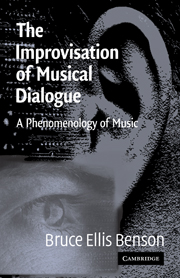ONE - Between Composition and Performance
Published online by Cambridge University Press: 14 January 2010
Summary
Suppose that someone has improvised on the organ. And suppose that he then goes home and scores a work of such a sort that his improvisation, judged by the requirements for correctness specified in the score, is at all points correct. In spite of that, the composer did not compose his work in performing his improvisation. In all likelihood, he did not even compose it while improvising. For in all likelihood he did not, during his improvising, finish selecting that particular set of requirements for correctness of occurrence to be found in the score.
So at what point is a composer finished? If a musical work does not (quite) exist while it is being improvised, what further steps are required to bring it into being and to solidify and define its being so that it may be pronounced “done?” Moreover, assuming that Wolterstorff is right in maintaining that composing is the act of selecting the properties that are to form the work, how does such selection take place and when does that decision process come to an end? Furthermore, what exactly is the line that separates composing and performing? Is there a clear line of demarcation, or are what we call “composing” and “performing” better understood as two facets of one activity? And, if performing is to be defined in terms of following the rules of correctness that the composer has set down, what does it mean to follow those rules?
- Type
- Chapter
- Information
- The Improvisation of Musical DialogueA Phenomenology of Music, pp. 1 - 32Publisher: Cambridge University PressPrint publication year: 2003



